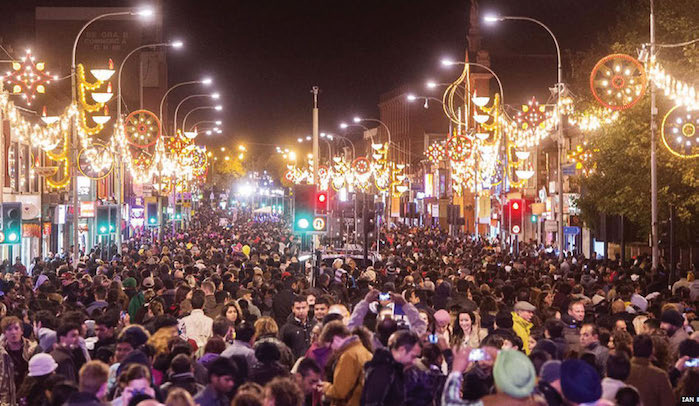
Janaki Jayanti is a sacred Hindu festival that marks the birth anniversary of Goddess Sita, the divine consort of Lord Rama and an incarnation of Goddess Lakshmi. This auspicious day is observed on the eighth day of the Krishna Paksha (waning phase of the moon) in the Hindu month of Magha, primarily by devotees in Nepal and certain regions of India.
Significance of Janaki Jayanti
Goddess Sita, also known as Janaki, symbolizes purity, devotion, sacrifice, and resilience. She is revered as an epitome of ideal womanhood and unwavering dedication to righteousness (Dharma). Janaki Jayanti holds immense spiritual significance as it commemorates the birth of a goddess who exemplified virtues essential for a harmonious and righteous life.
According to Hindu mythology, Sita was discovered in a furrow while King Janaka of Mithila was plowing the land during a yajna (sacred ritual). Because of this miraculous birth, she was named Janaki, meaning the daughter of Janaka. As an incarnation of Goddess Lakshmi, Sita played a pivotal role in the Ramayana, standing as a symbol of endurance and feminine strength.
The Legend of Sita
Goddess Sita’s life story is immortalized in the Hindu epic, Ramayana, revered as one of the greatest works of ancient literature. Born as the daughter of King Janaka of Mithila and Queen Sunayana, Sita emerged from the earth’s womb, symbolizing her divine origins and purity. From a young age, she exemplified unparalleled virtues of humility, compassion, and unwavering devotion to righteousness.
Sita’s life took a profound turn when she married Lord Rama, the prince of Ayodhya, in a grand ceremony that captivated the hearts of all who witnessed it. Her unwavering support and steadfast loyalty to Rama during times of exile and adversity exemplify her role as the ideal wife, epitomizing the concept of “Pati-Vrata” – devotion to one’s husband.
Despite enduring trials and tribulations, including her abduction by the demon king Ravana, Sita remained resolute in her faith and purity. Her unwavering devotion to Rama, even in the face of adversity, serves as an enduring example of loyalty, sacrifice, and divine love.
Rituals and Celebrations
The celebration of Janaki Jayanti is marked by various religious and cultural activities:
– Fasting and Devotional Prayers: Devotees observe a fast to seek the blessings of Goddess Sita. They offer prayers at temples dedicated to Sita and Lord Rama.
– Reading the Ramayana: Recitations of the Ramayana, particularly passages describing the birth, virtues, and life of Sita, are held in temples and homes.
– Special Pujas and Offerings: Idols of Goddess Sita are adorned with flowers, and offerings such as fruits, sweets, and traditional dishes are presented.
– Bhajans and Kirtans: Devotional songs praising Goddess Sita’s virtues and devotion to Lord Rama are sung by devotees.
– Processions and Dramas: In regions with a strong Mithila tradition, cultural performances, including reenactments of Sita’s life events, are organized.
– Charity and Social Service: Many devotees engage in acts of kindness, such as distributing food and clothing to the needy, in honor of Sita’s compassionate nature.
Celebrating Janaki Jayanti
Janaki Jayanti is celebrated with great enthusiasm and devotion across India and among Hindu communities worldwide. Devotees observe this auspicious day by offering prayers, reciting hymns, and organizing processions and cultural programs in honor of Goddess Sita.
Temples dedicated to Sita and Rama are adorned with colorful decorations, and special ceremonies are conducted to commemorate the divine union of the celestial couple. Devotees fast, perform rituals, and participate in charitable activities as a mark of devotion and gratitude towards the goddess.
The occasion of Janaki Jayanti serves as a reminder of the timeless virtues embodied by Goddess Sita – her unwavering devotion to righteousness, resilience in the face of adversity, and boundless love and compassion towards all beings.
Relevance Today
In today’s world, the life and teachings of Goddess Sita hold immense relevance, offering profound insights into the values of integrity, compassion, and devotion. Her story inspires individuals to uphold righteousness, stand against injustice, and cultivate unwavering faith in the face of challenges.
On Janaki Jayanti, as devotees gather to celebrate the birth of Goddess Sita, let us reflect on her timeless teachings and strive to emulate her virtues in our own lives. May her divine grace guide us towards a path of righteousness, compassion, and inner peace, and may we find solace and strength in her eternal presence.
In essence, Janaki Jayanti serves as a joyous occasion to honor and celebrate the divine embodiment of purity, devotion, and resilience – Goddess Sita, whose life continues to inspire and uplift countless hearts across generations.
Janaki Jayanti in Mithila and Nepal
The festival holds special importance in the Mithila region (now in Nepal and Bihar, India), as it is believed to be the birthplace of Goddess Sita. In Nepal, Janaki Mandir in Janakpur hosts grand celebrations, attracting thousands of pilgrims and devotees. The temple is beautifully decorated, and a large number of rituals take place, making it a focal point for the festival.
The Role of Women in Janaki Jayanti
Janaki Jayanti is especially significant for women, as Goddess Sita is considered a role model for patience, chastity, and self-sacrifice. Women perform special prayers and rituals to seek blessings for a prosperous married life, family happiness, and inner strength. In some regions, mothers teach their daughters about the values embodied by Goddess Sita, ensuring the continuation of cultural traditions and moral teachings.




Be the first to comment